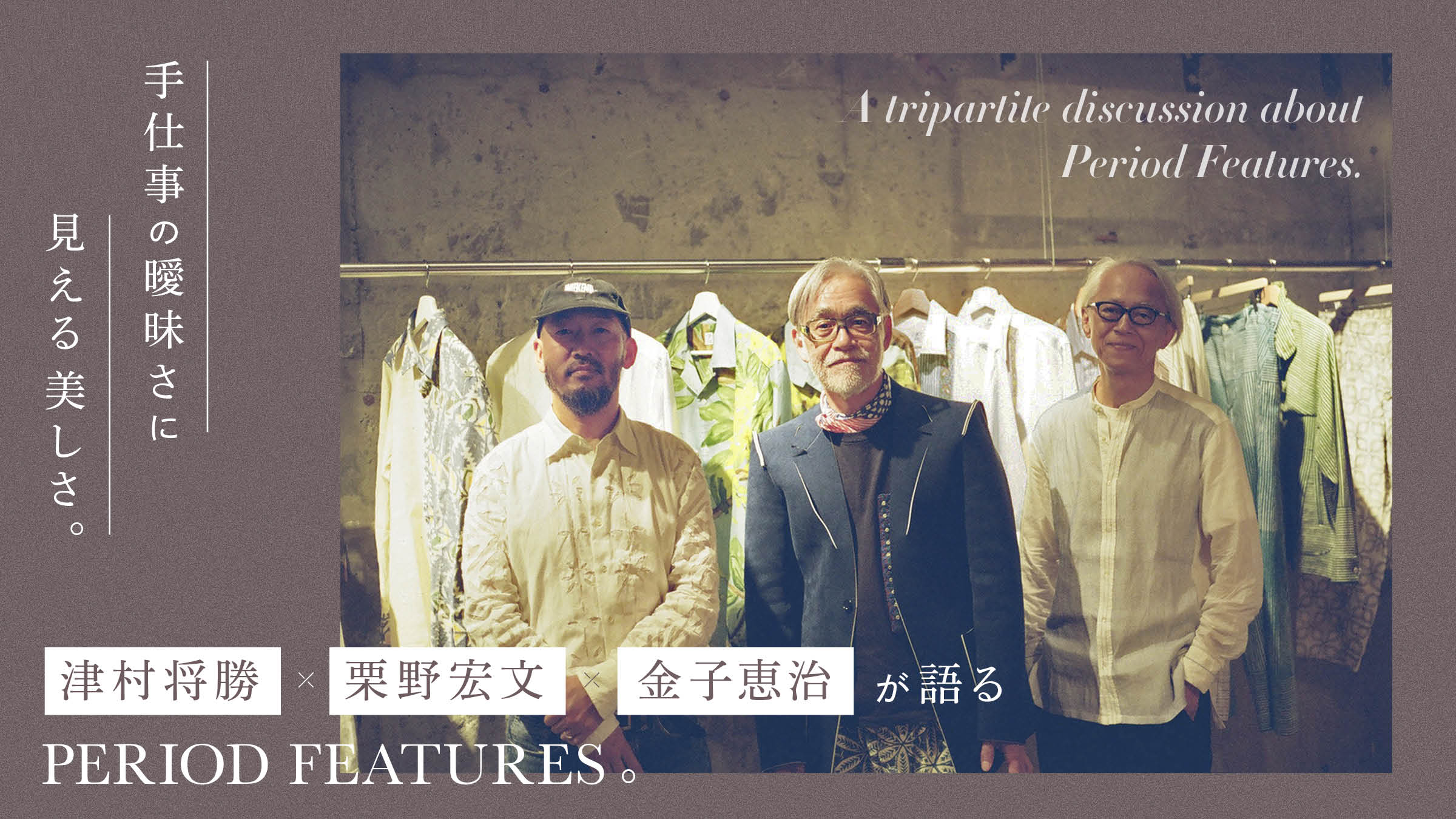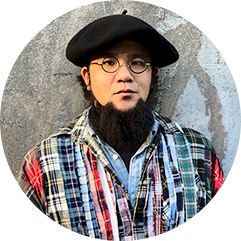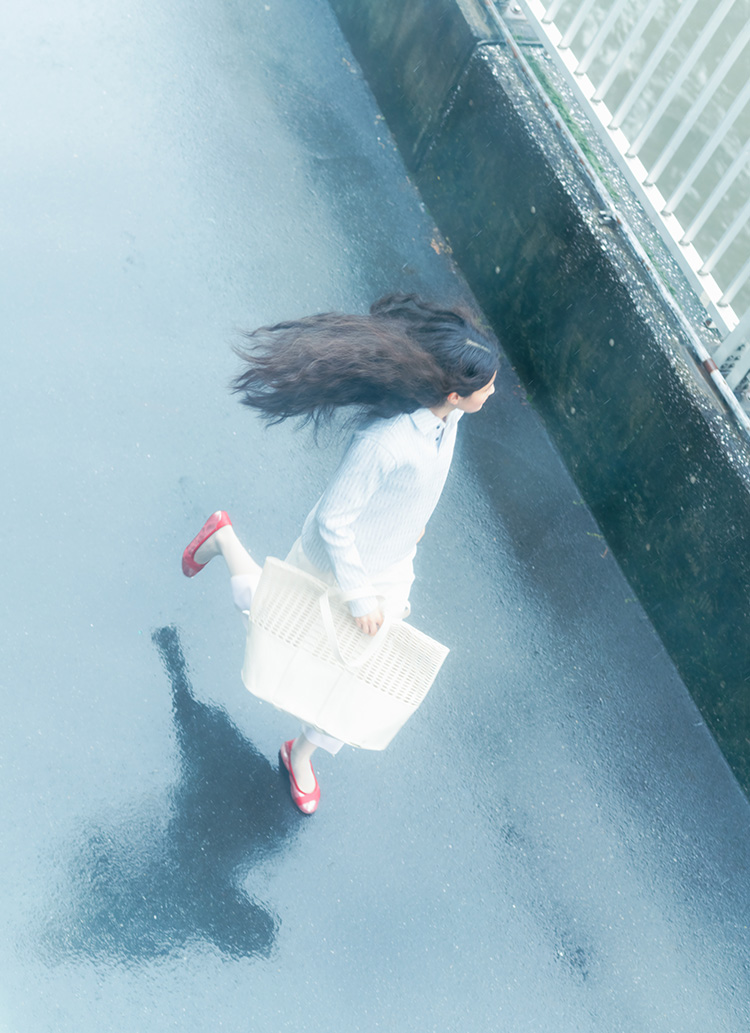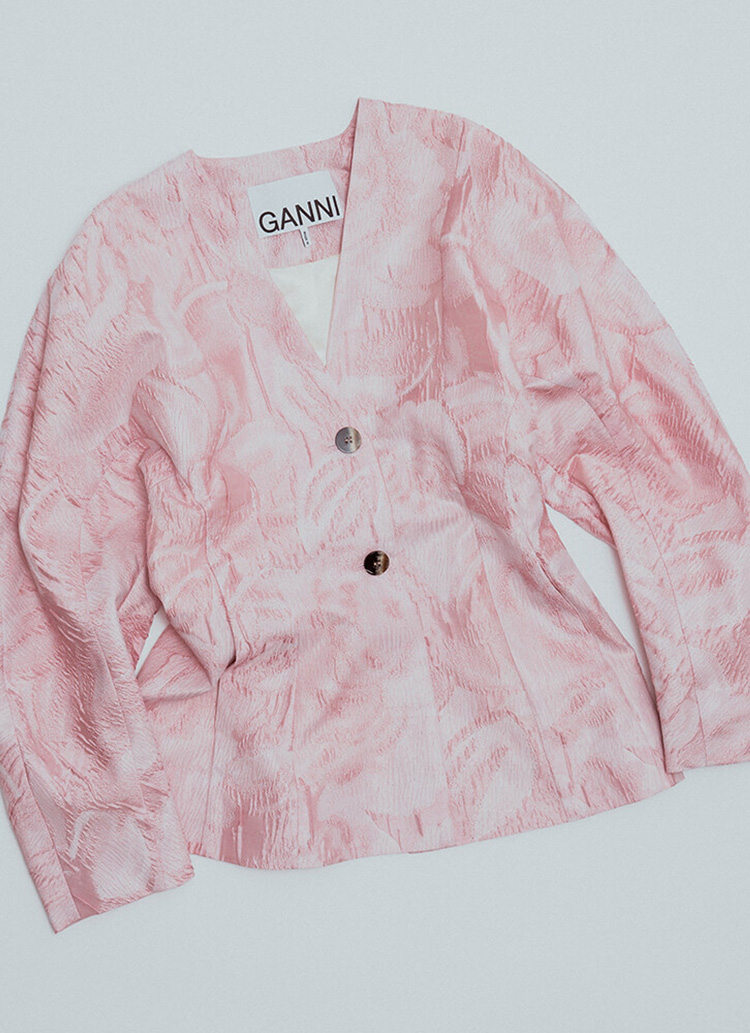The more we move, the more we encounter something. That is what we value.

-What will be the content of this event?
Kaneko:The hard part of the system of purchasing items on display at an exhibition is that the retailer has a budget limit, so we have to purchase within that range. We are not able to show all of Mr. Tsumura's creations to customers at the same time, and we can only offer what we have picked up. This time, however, we wanted to present a collection that was even more impressive than before, and our staff and I came to a consensus that we would hold an event in the form of an order-taking session.
Kurino:As a buyer, I have the same problem. What if we have a limited budget and buy with a limited number of orders, and the customer is actually waiting for more than that? If we do buy-ins, we can digest 1001 TP10T, and it is the most sustainable way to do it. Sustainability is not only about using organic cotton or recycled polyester. A shirt that can be worn for 10 years is sustainable, and long-lasting clothes are sustainable even if they are made of polyester. And if you only produce shirts for the orders you receive, there is no waste, which is the ideal form.
-What are some of the items that you are personally interested in?
Kurino:These answers may not be what you are looking for, but they are all good.
Kaneko:I am still interested in outerwear. What is this material?
Tsumura:It is wool silk. This is my first attempt at a winter garment. This is a new weaving project this year, and it is being made in an area called Kullu in India.
Kaneko:Have you been making prototypes of the coat before?
Tsumura:I did it because I like coats. But I started with the material. The shape is like a polo coat.
Kaneko:I can imagine Mr. Tsumura himself wearing it in a great way.
Kurino:It's a shape that people who lived in the 80's really liked. And the fact that the coat is white is also very Tsumura-esque.

Tsumura:The place called Kullu is in a remote valley that you don't want to go to anymore. You fly there, but you don't know if you will be able to land until you actually arrive. Once the return flight didn't fly, so we had to take a bus, and when we got on the bus we were given a bag. I thought it was strange, but it was a spectacular road. We had all put them back. Well, it was interesting, though.
Kaneko:Considering the hard work involved, I think that this clothing is available at such a low price. I don't think it can be compared to normal fashion, but in the context of fashion, there is a price tag that says a shirt is this price because it is a shirt, or a coat is this price because it is a coat. However, considering what Tsumura-san is doing, I think it would be fine if there were a completely different standard for pricing. I don't think it is strange that the price is twice as much. The production volume is extremely small. I think there are other brands like that. This is a selfish goal of mine, but I hope that a completely different price standard will be recognized. It is not just a matter of raising the price, but I believe that what is a proper value and price cannot be measured within the conventional wisdom and customs. On the other hand, clothes are neither art nor something to be placed in a gallery. It is a tool that is actually sold in stores, delivered to customers, and worn on a daily basis, so therein lies both the dilemma and the fun.

-Do you get your ideas from actually going to India and being exposed to the technology?
Tsumura:The more I move, the more I encounter something. I value that. I think that's why it continues. Because I am moving, I want to do it. When I think of a place I want to visit and do some research, I might find a craftsman who is carrying on the traditional techniques of the area, so I look up his phone number or e-mail address, and if I find a picture of his store, I go there.
-Actually going.
Tsumura:You can see the faces of all the people who work on the products I make. I want to convey the responsibility of the people who make the products.













